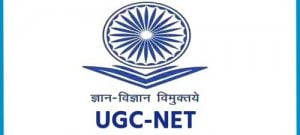Tourism Development at Global Level:
Tourism Development at Global Level: Tourism is a multi-dimensional industry and a conglomeration of manifold projects, propositions, and initiatives. The interdisciplinary flavour of tourism makes it a complex industry. Tourism is interconnected with almost all the fields. The development taking place in the realm of global tourism has been fast tacked realising the huge benefits tourism industry can bring forth to the all-round growth of destinations.
The Swift pace at which tourism projects are being incepted in almost all countries across the globe has catapulted the industry to greater heights. The adoption of latest technology to leverage various functions of the industry has also set the ball rolling for good prospects for all stakeholders of tourism. Day by day the strands of tourism development are increasing a great deal as every nation strives for innovation and creativity in the sphere of tourism.
In this section, tourism development at global level are grouped under various heads such as political, socio – cultural, environmental, legal, technological, and economical.

a. Tourism Development and Political Dimensions
The alignment of regions and formation of blocks between countries such as NATO, NAFTA, ASEAN, SAARC, EEC,BRICS, BCIM, etc have added teeth to the bilateral and multi-lateral relations and its repercussions are enormously evident in tourism. The end of hostility between estranged nations is a major political achievement due to tourism.
Tourism has gone a long way in consonance with the improved political equations between countries. The world has witnessed the surge of tourists to China when the nation opened its doors to tourism. Eventually, China’s economy experienced a splendid ascension. The accentuating tourist arrivals to south East Asia are an outcome of the political collaboration and networking between the countries.
The political undercurrents pave the way for sharing of resources infrastructure, indigenous know-how technology and human expertise. Several destinations are signing Memorandum of Understanding and Agreements for mutual co-operations in the area of tourism.
This is a strong development agenda and a political outcome. In line with the political outcomes of tourism development there are various other aspects involved such as liberalisation of travel formalities, ease of sanctioning foreign direct investment in tourism smooth issuance of E-Visas, Visa on Arrival schemes extended towards Most
Favourite Nations (MFN’s) and also the confidence Building Measures (CBM’s) which have a positive bearing on tourism promotion.
At the same time, tourism is also used as a political weapon to show animosity. Some countries are banning tourist’s influx from the countries they consider hostile. Similarly, travel advisories issuing Banning Outbound Travel sometimes Restrictive Travel and in certain cases Caution Advised these actions needless to mention stunt the growth of tourism. Amicable political relationships can lead to cultural exchanges which nourishes tourism activities.
b. The Socio-Cultural Slants in Tourism Development
On the socio-cultural front tourism has progressed excellently. The revival of cultural embodiment by way of encouraging artisans and performers along with preservation of monuments, ruins, performing art forms and traditional artefacts has harbingered path breaking development in tourism.
The curiosity to know about other societies and their cultures has triggered tourist visits as a result tourists stay in countries on a long term basis to learn traditional dance, craft making, and music and martial art forms.
c. Environmental Perspectives vis – a – vis Tourism Development
A major turnaround that occurred in the sphere of tourism is to bring the phenomenon under the umbrella of sustainable developments. Thus, the key being sustainable tourism all the tourism initiatives come under the scanner in terms of its environment impacts and therefore are planned, managed and measured in a proper manner.
Most of the environmental resources have become tourism products. Hence preservation of natural resources such as forests, flora and fauna, waterfalls, beaches lakes, rivers, ponds, streams, glaciers marine aspects and the like gives remarkable impetus to tourism development.
Community based tourism (CBT) has enormously impacted tourism development globally, mainly by preserving and showcasing the environmental resources. Ensuring vibrant community participation in tourism projects is a strong factor aiding tourism development.
d. Legal Implications and Tourism Development
It is an irrefutable fact that very few countries in the world have enacted legislative measures as regards the domain of tourism, consequently, the global code of ethics has been adopted by many a tourism destination to lay down the regulatory measures and guidelines pertaining to tourism development.
Accordingly, the ethical frame work of tourism has been strengthened owing to the drafting of National Tourism Policies. Tourism Development Committees have been subsequently formed to devise Action Plans and create a road map for tourism growth.
There are hordes of issues that impede and post several constraints to tourism development like safety and security threats cheating, cyber crimes, human rights violation, displacement cultural dilution, fleecing, disfiguring monuments and aesthetics, littering quarrying, etc. and hence strong legal interventions are warranted in the event of such occurrences.
e. The Perspectives of Technology in Tourism Development
The contemporary information society has the character of tourism industry and made it a highly information intensive industry as IT has a potential impact on tourism business. IT tools have facilitated business processes in tourism industry by dissemination of updated information, advanced reservation systems and search engines and smooth, fast, and efficient access. Customers, on the other side, are increasingly using online travel portals to obtain information on various travel itineraries for planning their travel. Tourism development is greatly influenced by the industry professionals who are technically trained to handle the operations involving ICT tools system and information practices.
f. Tourism Development and Economic Indicators
The rise in the purchasing power of tourists to global destination has strongly impacted the demand to tourism industry offering cost effective destinations and tourists are satisfied when they receive value for money products and services. Albeit, the fluctuating hotels, restaurant and travel rates are a cause for concern.
The Forex reserves are swelling and tourism contribution to world GDPIS is staggering due to increase in world tourist arrivals. Budget tourism must be provided ample thrust. Both direct and indirect taxes positively influence the economic situation of destinations.
i. The Issues and Challenges of Tourism Development at global level
ii. Acute Ailments
The spread and threat of acute ailments like Ebola virus, disease, Zika viral infection, AHINI, SARS, Plague, AIDS, etc pose hurdles in the path of tourism development. Travel advisories have been issues against many Africa destinations owing to the fear of infection of Ebola and Zika
iii. Terrorism and Political Strife
Violence, terrorist strikes, commotion, communal riots and political strikes and disturbances pose serious threats to tourism development
iv. Safety and Security Threats
Sexual atrocities on women tourists, lack of life guards, police and security personnel at beach and remote destinations, absence of CCTVs, cyber crimes and hacking of tourism websites are impediments to tourism development
v. Shortfalls in Tourism Amenities
Shortage or absence of basic tourism amenities such as pure drinking water , comfort stations, rest rooms, wash rooms, information, and interpretation centers , guide facilities, tourism signage’s, etc can act as obstacles to the advancement of tourism
vi. The other challenges comprise
- Economic exploitation
- Erosion of destination image due to child trafficking prostitution , drug abuse, etc
- Issues of racism. Human right violation, displacements and refugee crisis
- Military coups
- Kidnapping of tourists
- Political sanctions
- Poaching and illegal trading
vii. The Path-breaking Factors in Global Tourism Development
Though the list is exhaustive when it comes to underpinning the crucial factors that act as drivers of global tourism development a few are mentioned from the current perspective as follows
a. Responsible Tourism
This entails pro- active role by all stakeholders to plan, market and manage tourism in a responsible manner to ensure sustainable growth of destinations and in such a way that it results in a meritorious situation for all parties. The Governments are responsible for encouraging local community that will bring solid benefits to them. The private sector is responsible for promoting tourism in environmentally friendly ways.
The local community is responsible for offering safety and comfort to tourists and the tourists are responsible for respecting local traditions, observing the codes of conduct at destinations, and buying locally made products. The responsible tourism RT approach has brought about significant changes to global destinations
b. Destination Management Organizations(DMOS)
The destination management organization such as the Mauritius tourism promotion authority (MTPA) is playing a critical role in wooing tourists and channelizing the arrivals for developing tourism industry in the respective countries. The DMOS take the lead in effectively marketing the tourism products and service
c. Community- based Tourism
The active involvement of host communities in tourism development has given a real face life to many a destination. Community driver tourism enterprises are ruling the roost ideally for a win situation. It is also in the best interests of the overall welfare of the destination.
d. Mobile Applications
GPS and other mobile application extensively used in booking tickets, navigation and other services have revolutionized tourism and mobile apps play a pivotal role in destination marketing too.
e. Virtual Tourism
Tourists get a virtual feel of the destinations they are going to visit by accessing the online technology platform that dishes out virtual imagines through multi media. This enables tourism to make a clear cut decision on travel. Virtual tourism is very useful for arm chair travelers also it is employed as a marketing tool by destination marketers
f. Facilities for Barrier-free Tourism
There is a staggering increase in the number of differently abled tourism servitors, and children. Destinations worldwide are setting up facilities such as tactile pathways and
Braille signage’s to cater to the need of accessible tourists
g. Demographic Aspects
A notable increase in the number of women travelers, solo travelers, backpackers and senior citizen is a positive trend. Travel enthusiasm among youth is also quite encouraging for the industry. IT professionals are planning steady weekend trips h. Innovation and Creativity in Tourism and Hospitality Enterprises
Excellent innovation is the hallmark of many a tourism and hospitality enterprises worldwide. The tourism trains are landmark features of premier destination aligned with boutique hotels, ecotels, golf courses, vineyards, sound and light shows, pyrotechnics, IMAX theatre entertainment parks like Disney worlds, Go Karting centers exhilarating events, themed restaurants, hospitality Icons like Burj Khalifa and much more. Above mentioned are some of the catalysts of global tourism development
Global Destinations – A Bird’s Eye View The United States and Canada
The US being the destinations of the most tourists is the largest tourist industry in the world. Florida California Hawaii and New York receive the most revenues from tourist. Popular attractions in the city of New York included the statue of Liberty the United Nations building and Rockefeller centre.
Some of the world best art museums are located in New York which is served by Kennedy airport, La Guardia airport and the New York, New jersey airport. Other attractions in the state of New York include Niagara Falls. Disneyland amusement park is located in Anaheim California near Los Angeles, the largest Hollywood movie studios, Beverly Hills, Long Beach Harbon and coastal beaches. United Kingdom
The United Kingdom, commonly called Great Britain includes North Ireland,
Scotland, and Wales. The nation’s capital, London, is served by three major airports,
Heathrow, Gatwick, and Stansted. Visitors to London are attracted to the tower of Big Ben, Buckingham Palace, Windsor Castle, London Bridge, London Eye, Westminster abbey, Trafalgar square, and Piccadilly Circus. Outside London are Canterbury Cathedral and the Universities of Oxford and Cambridge. People visit Lake District for scenic and pastoral beauty.
France
Paris is site of the Eiffel Tower, the Arc de triomphe, the cathedral of Notre Dame, the Louvre, and the Latin Quarter. The major airports are Charles de Gaulle and Orly. Outside Paris Visitors can explore the wine making regions of Burgundy and Bordeaux, the French Riviera, and the Grimaldi Museum which features the largest Picasso collection. Nice is the gateway to the coastal resorts of the Riviera region.
Italy
Visitors to Rome, the former capital or the Roman Empire, can explore ancient ruins and visit the coliseum. The Major airports in the area are Fiumicino and Campion. Other popular Italian destinations include Venice, a city of canals, beaches, and casinos; the churches and cathedrals of Florence and Milan, the ruins of Pompeii near Naplesl and the green hills and rustic villages of Sicily. The Milan area is served by the Linate airport.
Switzerland
Lake Lucerne, the Gothic cathedral and botanical gardens in Berne and the museums and cathedrals of Zurich are popular attractions in Switzerland. In the Swiss countryside are Alpine villages and world-class ski resorts, nestled among snow-capped peaks.
Africa
Travel on the African continent was once confined to North Africa and the Middle East. With increasing public interest in wildlife conservation, excursions to the interior have grown in popularity. Kenya, Tanzania and Somalia are famous for their wide life reserves and national parks. Near Nairobi, Kenya are Nairobi National Park, Snake Park and Menegi crater.
Kale Nakuru in the Rift Valley has over 300 species of birds. In the shores of Lake Victoria, Akagara National park is home to lions, leopards, buffalo and hippos. The 1800 foot Ngorongoro Crater is the largest volcanic crater in the world
Egypt and the Middle East
Egypt is the leading destination in North Africa and the Middle East, attractions in the Cairo area include the Gasa Pyramids and the Egyptian Museum visitors to Egypt can cruise down the river Nile, relax at Mediterranean resorts, or go scuba diving in the Red sea.
India and Asia
India and Asia form the largest land area in the world. The largest countries of this region are China and India Philippines, Korea and Japan are densely populated countries. Travel to Asia became popular in the 1980’s, with increasing public interest in Chinese culture and the rise of Japan as a manufacturing and financial centre.
Thailand
Ancient Buddhist temples, exotic dance companies, and seemingly endless handicraft shops attract visitors to Bangkok, the capital of Thailand. Other popular attractions include the crocodile farm, the National Museum and Thailand boxing.
Japan
One of the most densely populated islands in the world, Japan is the main primary destination of many business travelers as well as tourists. Visitors to Tokyo arrive at nearby Narita airport. Popular attractions include the Imperial Palace and Ueno Park, which contain the national museum, art gallery, science museum, and zoo. Outside Tokyo, tourists can explore rock gardens, wildlife parks, religious shrines, and hot springs.
Australia
Depending on one’s point of view, Australia is either the smallest continent or the largest island. The Australian climate ranges from deserts to rainforests and snow – lined peaks. Thousands of miles of desolate wilderness, known as the “outback”, stretch across the interior of the continent.
The coastal areas feature scenic beaches and picturesque coves. Just offshore from Cairns is the world’s largest coral formation, the Great Barrier Reff. Visitors to this former British crown colony can visit zoos, wildlife sanctuaries, botanical gardens, historical set-timents, or the Sydney opera house.




